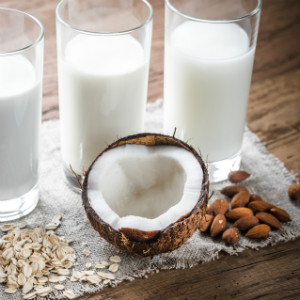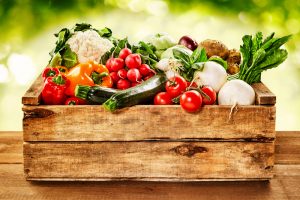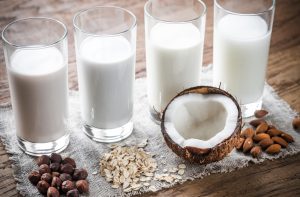
Navigating the dairy dilemma…
Ever since we were young we’ve been told to drink milk for our bones, but is that advice actually correct?
Consider this…
Humans stop producing lactase (the enzyme necessary to digest milk) between the ages of 2 and 5. In fact, for most mammals, this is typical. After they’ve been weaned the digestive enzyme is simply not needed anymore.
But what do humans do?
About 10,000 years ago, someone decided that milking domesticated animals for human consumption was a good option. Initially, not such a terrible idea as raw cow’s milk contains all the vitamins, minerals and enzymes required for its digestion, absorption and metabolism.
It contained calcium, deemed to be good for bones.
But no one considered the hormones that were naturally present in cow’s milk that were designed to make a baby cow grow into an adult cow!
Todays cow’s milk is a far cry from the original – it’s pasteurised, which destroys the enzymes necessary to digest it, alongside with loss of calcium, vitamin C and B vitamins.
Essentially most of the nutrients are lost and we are not able to digest it properly.
Homogenisation occurs after pasteurisation- this process breaks down the fat molecules so that they stay in solution (ie. so that the fat/cream doesn’t float to the top like the olden days). This process oxidises the fats causing free radicals and has been shown to be a factor in arterial wall damage, heart damage and even DNA damage!
Furthermore, we are ingesting the antibiotics, detergents, viruses, toxins, pesticides and hormones that are fed to cows in modern times in order to increase milk production.
In its natural form milk is considered a ‘body building’ food, being high in protein, and full of B, A, D and E vitamins.
But not only is the milk we drink no longer in its natural form, but proteins (by nature) increase the acidity of our body.
When acidity increases, calcium is actually pulled from our bones in order to buffer it and re-alkalinise the body. So the calcium we think we’re consuming for the good of our bones is actually doing the exact opposite!
So let’s take a look at whether we actually need to consume dairy at all…
This question leads us right back to how much calcium do we need and can we get enough from our diet.
The simple answer to the second question is YES.
As you would expect you need to consume more calcium as you get older. 99% of our body’s calcium is stored in the bones and it reaches a peak around the age of 25. After that it steadily declines.
So what we put into our bodies before the age of 25 is critical in order to reach our maximum, then after 25 we want to try and minimise the decline as much as possible.
Calcium requirements (per day)
- Children: 500mg to 1000mg (girls) and 500mg to 1300mg (boys) – increasing progressively from birth until the age of 18.
- Adults: 1000mg
- Women >50: 1300mg
- Men >70: 1300mg
Source: Osteoporosis Australia
 Eating a plant based diet will give you sufficient calcium for healthy bones. Here are some of natures best calcium rich foods;
Eating a plant based diet will give you sufficient calcium for healthy bones. Here are some of natures best calcium rich foods;
- Sesame seeds
- Figs
- Tofu
- White beans
- Chick peas
- Figs
- Organic green veggies: Broccoli, bok choy, kale, brussels sprouts etc
- Almonds & almond milk (ensure you choose a good quality brand or even better make your own!)
- Rice milk
2 pieces of fruit and 5 servings of vegetables (that’s 5 cups) will give you sufficient calcium for your bones. Then add a few others from the list and you’ll be eating more than enough!
To reduce calcium loss from your bones;
- Ensure you have adequate vitamin D from sunlight exposure
- Include weight building exercise 2-3 times per week
- Keep your meat intake to a minimum (1-2 times per week and counteract the potential calcium loss with plenty of green leafy veg)
- Cut out salt
- Limit or cut out caffeine (no more than 1 cup per day)
- Quit smoking
If you do decide to continue consuming milk then choose fermented milk – this is raw milk with the good bacteria added (Lactobacillus/ Bifidobacterium) to ferment it naturally. Goat’s milk is more easily absorbed than cow’s given the fact it is usually sold raw due to its natural homogenisation. Sheep & buffalo milk is similar to goat’s; low allergy and is more digestible than cow’s milk. Yoghurt, kefir and organic cheese that have been naturally fermented with bacteria will also provide all the beneficial nutrients without the nasty stuff added.
 Milk alternatives are also fantastic – oat, rice, coconut, almond, cashew etc. – but do mix it up rather than switch entirely to just one of these to avoid new allergies forming. And be sure to watch out for additives!
Milk alternatives are also fantastic – oat, rice, coconut, almond, cashew etc. – but do mix it up rather than switch entirely to just one of these to avoid new allergies forming. And be sure to watch out for additives!
Don’t be fooled by the A2 and lactose-free milk. It’s just cow’s milk that has been further processed.
Lastly, make friends with your local organic store and ask for their advice on the best brands to use. And ensure there are no added fats or sugars!







Sorry, comments are closed for this post.